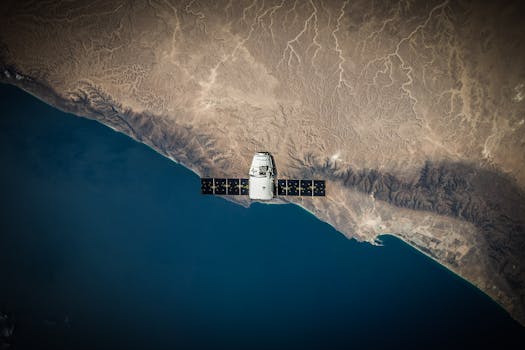
MEO satellites, or Medium Earth Orbit satellites, are a type of satellite that operates in an orbit between 2,000 and 36,000 kilometers above the Earth’s surface. MEO satellites are revolutionizing the way we communicate and access data globally, offering a range of benefits and applications that are transforming industries and improving lives.
The use of MEO satellites has become increasingly popular in recent years, driven by advances in technology and the growing demand for global connectivity. MEO satellites offer a number of advantages over other types of satellites, including lower latency, higher bandwidth, and greater flexibility. These benefits make MEO satellites ideal for a range of applications, including telecommunications, navigation, and Earth observation.
One of the key benefits of MEO satellites is their ability to provide global coverage with a relatively small number of satellites. This is because MEO satellites operate at a higher altitude than Low Earth Orbit (LEO) satellites, which allows them to cover a larger area of the Earth’s surface. Additionally, MEO satellites have a longer lifespan than LEO satellites, which reduces the need for frequent replacement and minimizes the risk of satellite failure.
Another advantage of MEO satellites is their lower latency compared to Geostationary Orbit (GEO) satellites. Latency refers to the time it takes for a signal to travel from the Earth to the satellite and back again. MEO satellites have a latency of around 20-30 milliseconds, which is significantly lower than the 200-300 milliseconds experienced by GEO satellites. This makes MEO satellites ideal for applications that require real-time communication, such as video conferencing and online gaming.
Applications of MEO Satellites
MEO satellites have a range of applications across various industries. In the telecommunications sector, MEO satellites are used to provide broadband internet access to remote and underserved communities. They are also used to support mobile networks, providing coverage in areas where terrestrial infrastructure is limited or non-existent.
In the navigation sector, MEO satellites are used to provide location-based services, such as GPS and GLONASS. These satellites use a network of satellites orbiting the Earth to provide location information to receivers on the ground. MEO satellites are also used in Earth observation applications, such as weather forecasting and environmental monitoring.
Furthermore, MEO satellites are being used in the development of the Internet of Things (IoT). The IoT refers to the network of physical devices, vehicles, and other items that are embedded with sensors, software, and connectivity, allowing them to collect and exchange data. MEO satellites are being used to provide connectivity to IoT devices in remote and hard-to-reach areas, enabling a range of applications, such as smart agriculture and smart cities.
Challenges and Future Developments
Despite the many benefits of MEO satellites, there are also challenges associated with their development and deployment. One of the main challenges is the high cost of launching and operating MEO satellites. Additionally, there are regulatory challenges, such as obtaining the necessary licenses and permits to operate a satellite constellation.
However, despite these challenges, the future of MEO satellites looks bright. There are several companies and organizations that are currently developing MEO satellite constellations, including O3b Networks, SES, and the European Space Agency. These constellations are expected to provide a range of benefits, including improved global connectivity, increased access to data, and enhanced navigation capabilities.
In conclusion, MEO satellites are revolutionizing the way we communicate and access data globally. With their lower latency, higher bandwidth, and greater flexibility, MEO satellites are ideal for a range of applications, including telecommunications, navigation, and Earth observation. As the demand for global connectivity continues to grow, the importance of MEO satellites will only continue to increase.
Conclusion
In summary, MEO satellites are a game-changer in the field of satellite technology. Their unique combination of benefits, including lower latency, higher bandwidth, and greater flexibility, make them ideal for a range of applications. As the world becomes increasingly dependent on global connectivity, the importance of MEO satellites will only continue to grow.



